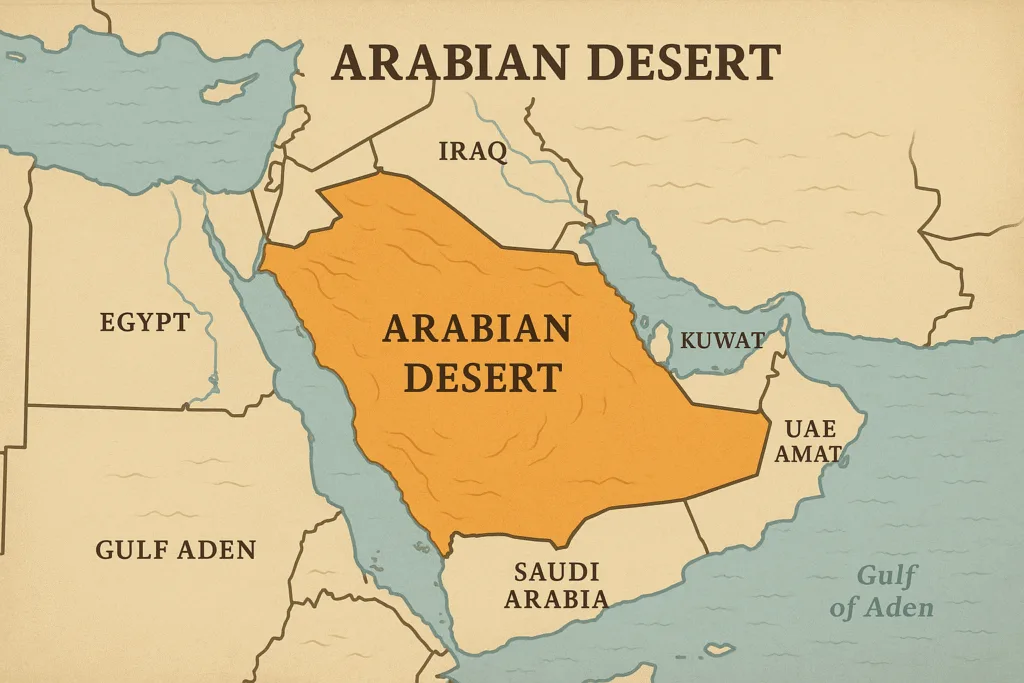Location & Continent
Continent: Asia
Country: Pakistan
Province: Punjab
Coordinates: 31.250°N, 71.667°E
Physical Features
Area: 19,501 km² (WWF ecoregion IM1302)
Setting: Alluvial plain between the Indus and Chenab rivers, fringed by the Salt Range to the north
Landforms: Aeolian sand sheets and low dunes, gravelly regs, clay pans, and seasonally active dry channels (nai)
Elevation: Mostly ~150–300 m above sea level across the Punjab plain
Climate & Precipitation
Temperature: Near-freezing winter nights; summers frequently exceed 45 °C
Seasonality: Hot, arid climate with brief monsoonal influence (July–September)
Precipitation: Low and highly variable; parts of the lower Indus basin receive <100 mm annually, while basin-wide long-term averages are ~365 mm with strong north–south gradients
Ecological Features
Ecozone (Realm): Indomalayan
Biome: Deserts & xeric shrublands
Ecoregion: Indus Valley Desert (IM1302)
Adjacent Ecoregions: Northwestern thorn scrub forests; Thal Desert and other Indus plains xeric systems
Flora & Fauna
Characteristic flora: Khejri (Prosopis cineraria) with drought-tolerant shrubs and grasses adapted to saline, sandy alluvium
Large mammals: Indian wolf (Canis lupus pallipes), striped hyena (Hyaena hyaena), caracal (Caracal caracal), Indian leopard (Panthera pardus), and Punjab urial (Ovis vignei punjabiensis)
Notable birds: Red-necked (red-headed) falcon and other raptors using dune and scrub mosaics for hunting
Conservation notes: Natural habitats remain patchy but comparatively intact away from irrigation corridors; key pressures include illegal hunting and fragmentation near settlements and canals
Geology & Notable Features
Geology: Young alluvial sediments from the Indus system with wind-reworked sands forming dune fields; inter-dunal pans reflect high evaporation and episodic runoff
Notable features: Proximity to the Salt Range escarpment; interface with the Thal dune belt; riverine oases along seasonal channels
Introduction
The Indus Valley Desert, also known as the Thar Desert, is a fascinating arid region located in the northwestern part of the Indian subcontinent. Spanning across India and Pakistan, this desert covers an area of approximately 200,000 square kilometers and is one of the largest deserts in the world. In this article, we will explore the unique features, climate, ecology, and cultural significance of the Indus Valley Desert while providing a detailed comparison with other desert regions.
Geography
The geography of the Indus Valley Desert is characterized by its unique landscape, which includes sand dunes, rocky outcrops, and semi-arid plains. It stretches from the Aravali Range in the northeast to the Sindh Plains in the south, bordered by the Indus River to the west. Below is a brief comparison of the geographical features of the Indus Valley Desert with another prominent desert.
Geographical Comparison
| Desert Name | Location | Area (sq km) | Key Features |
|---|---|---|---|
| Indus Valley Desert | India and Pakistan | 200,000 | Sand dunes, dry riverbeds, and rich archaeological sites |
| Sahara Desert | North Africa | 9,200,000 | Large sand dunes, oases, and extreme temperature variations |
Climate
The climate in the Indus Valley Desert is predominantly arid, with very hot summers and cool winters. Average temperatures can reach up to 50°C (122°F) during the day in summer, while winter temperatures can drop to about 5°C (41°F) at night. Rainfall is scarce, averaging around 200-500 mm annually, primarily during the monsoon season from July to September.
Ecological Features
The Indus Valley Desert is home to a variety of unique flora and fauna adapted to survive in harsh conditions. Plant life includes resilient species such as cacti, acacias, and grasses that have developed intricate root systems to extract moisture from the soil. In terms of wildlife, the desert is inhabited by animals such as:
- Desert Fox
- Blackbuck Antelope
- Indian Cobra
- Lizards
The region’s biodiversity, though limited, plays a crucial role in the ecosystem.
Cultural Significance
The Indus Valley Desert has a rich cultural heritage that dates back thousands of years, largely due to its association with the ancient Indus Valley Civilization. This civilization is known for its remarkable urban planning, advanced drainage systems, and trade networks. Today, the desert is home to various communities that contribute to its vibrant tapestry of traditions, music, and art.
Modern Challenges
Despite its rich history and ecological significance, the Indus Valley Desert faces numerous challenges, including desertification, water scarcity, and the impacts of climate change. Efforts are being made to promote sustainable practices and conservation programs to protect this unique environment.
Conclusion
The Indus Valley Desert is not just an arid expanse; it is a region of profound historical, cultural, and ecological importance. From its unique geographical features to its vibrant wildlife and rich history, the desert continues to captivate scholars, travelers, and conservationists alike. Understanding and protecting this delicate ecosystem is crucial for future generations.
References
Indus Valley Desert — Wikipedia
Indus Valley desert — DOPA Explorer (European Commission JRC)
Precipitation Trends over the Indus Basin — NOAA (U.S. Gov.)
Indus basin rainfall & temperature indicators — GRID-Arendal (UNEP partner)
Punjab Urial profile — Punjab Wildlife & Parks Department (Gov. of Punjab)
FAQ
Where exactly is the Indus Valley Desert?
It lies in northwestern Punjab, Pakistan, between the Indus and Chenab rivers, centered near 31.250°N, 71.667°E.
How large is it?
The ecoregion covers about 19,501 square kilometers, making it a compact but distinct desert within the Indus plains.
How hot and dry does it get?
Summer days commonly exceed 45 °C. Rainfall is sparse and erratic, with some lower-basin sectors receiving less than 100 mm per year, while the wider basin average is roughly 365 mm.
Is it part of the Thar Desert?
No. It is a separate WWF ecoregion (IM1302), though it borders other arid landscapes of the Indus plains, including the Thal dune belt.
Which animals are emblematic?
Top carnivores include the Indian wolf, striped hyena, caracal, and leopard. The Punjab urial is a flagship mountain sheep of the broader region, and the red-necked falcon is a notable bird of open scrub.


